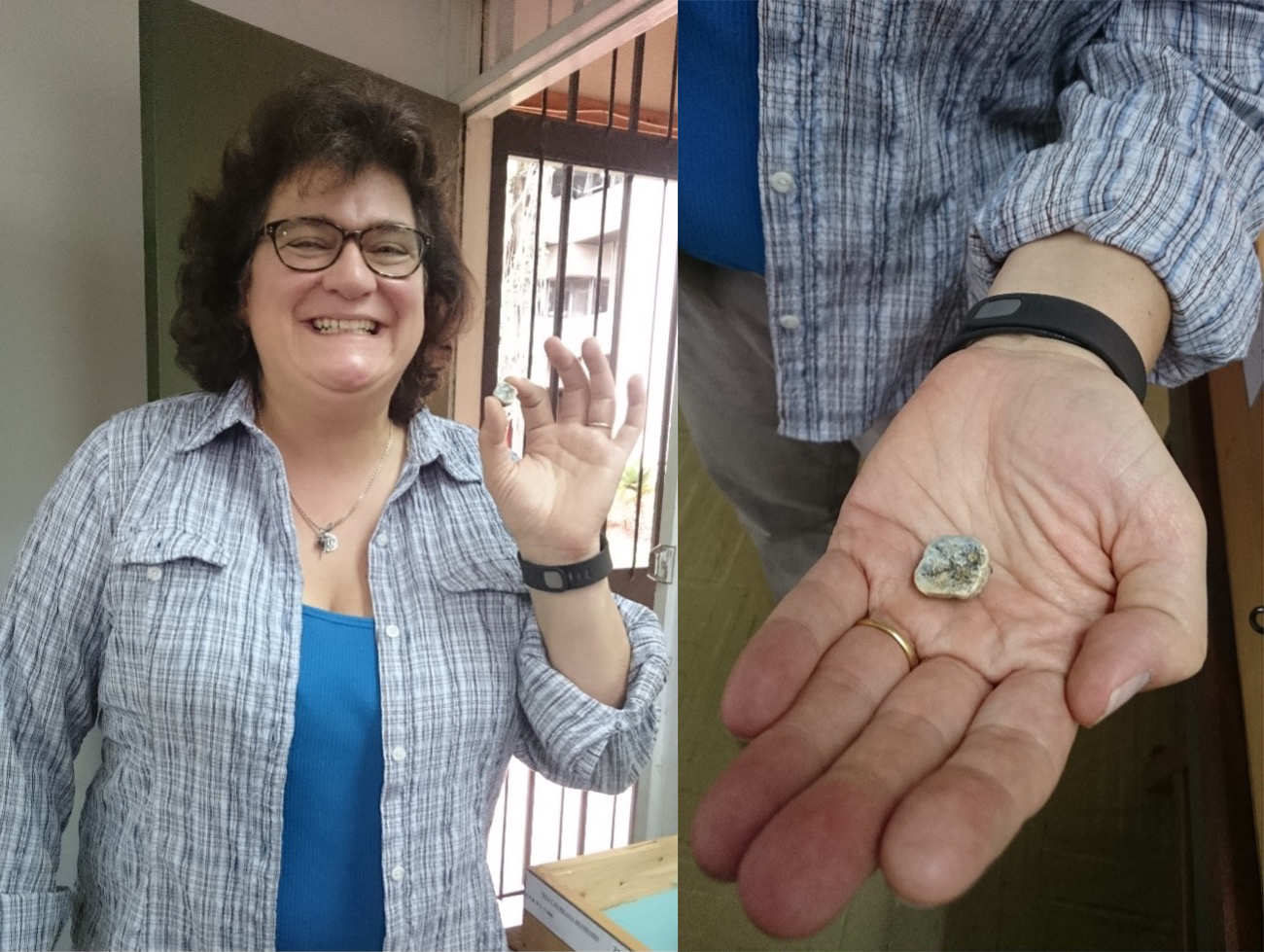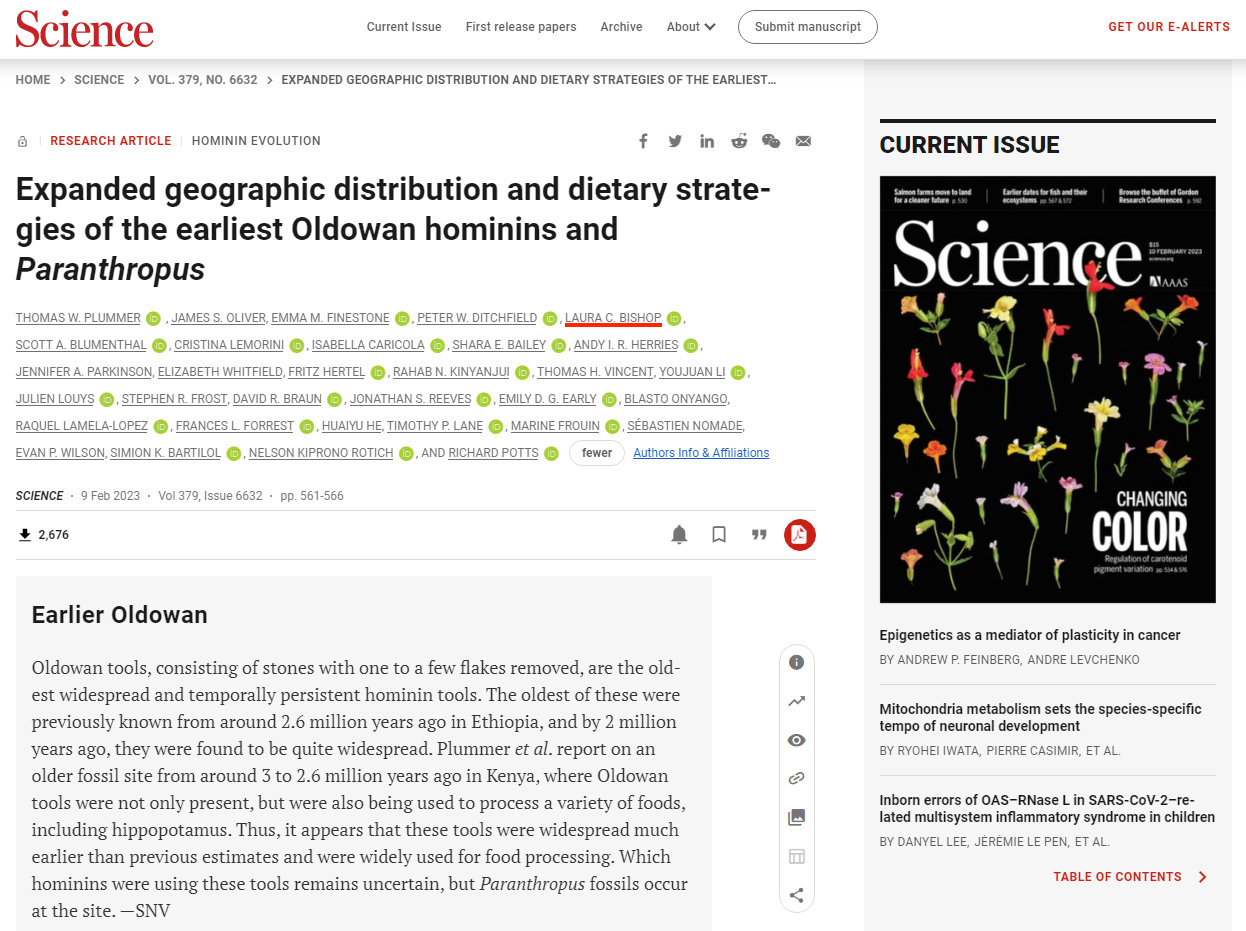February 17, 2023
| By SBC:An Yi | Copyedited by William, Zhang Liu
10th February 2023, a major study titled “Expanded geographic distribution and dietary strategies of the earliest Oldowan hominins and Paranthropus” was published on the journal Science with the participation of the Sino-British College, USST. Professor Laura Bishop, Former Principal of SBC made significant contribution to this research as the fifth author during her contribution at the College.
Scientists have unearthed fossil sites near Lake Victoria in Southern Kenya and expand this distribution by over 1300 kilometers. The fossils are the oldest discovered “pebble tools”, also known as Oldowan tools, by some 3,000,000 years, used to process plant and animal materials. There’s even direct evidence that the tools were used to butcher hippo and bovine carcasses, the earliest evidence of this behaviour. Alongside were found the oldest known fossils of Paranthropus, a human ancestor species from the early Pleistocene period. The evidence directly associates Paranthropus with the tools, and this challenges the more traditional narrative that Oldowan technology appeared with the arrival of early Homo, who were our direct ancestors.
The excavations behind this study offer a snapshot of the world humans’ ancestors inhabited and help illustrate the ways that stone technology allowed these early hominins to adapt to different environments and, ultimately, give rise to the human species.
The research was led by the Smithsonian’s National Museum of Natural History and Queens College, City University New York, and involved six scientists with links to Liverpool John Moores University as well as researchers from the National Museums of Kenya, and institutions in the USA, France, Italy and China.
Professor Laura Bishop, of the Research Centre in Evolutionary Anthropology and Paleoecology at Liverpool John Moores University, UK, said: “This is an amazing find and shows the story of human evolution and behaviour is full of surprises.” “Though multiple lines of evidence suggest the artefacts are likely to be about 2.9 million years old, the artefacts can be more conservatively dated to between 2.6 and 3 million years old.” said lead study author Thomas Plummer of Queens College, research associate in the scientific team of the Smithsonian’s Human Origins Program.
Professor Laura Bishop has devoted herself to anthropology for many years. She participated in several field investigations in East African and South African and did research in the U.S, Europe, etc. She made positive contribution to SBC development as Principal of the College by promoting international cooperation and stressing research activities of the teaching staff from September 2018 to December 2021.

Laura Bishop (LJMU) with Nyayanga Paranthropus molar

the paper published on Science

 Home
·
News & Events
·
Content
Home
·
News & Events
·
Content

